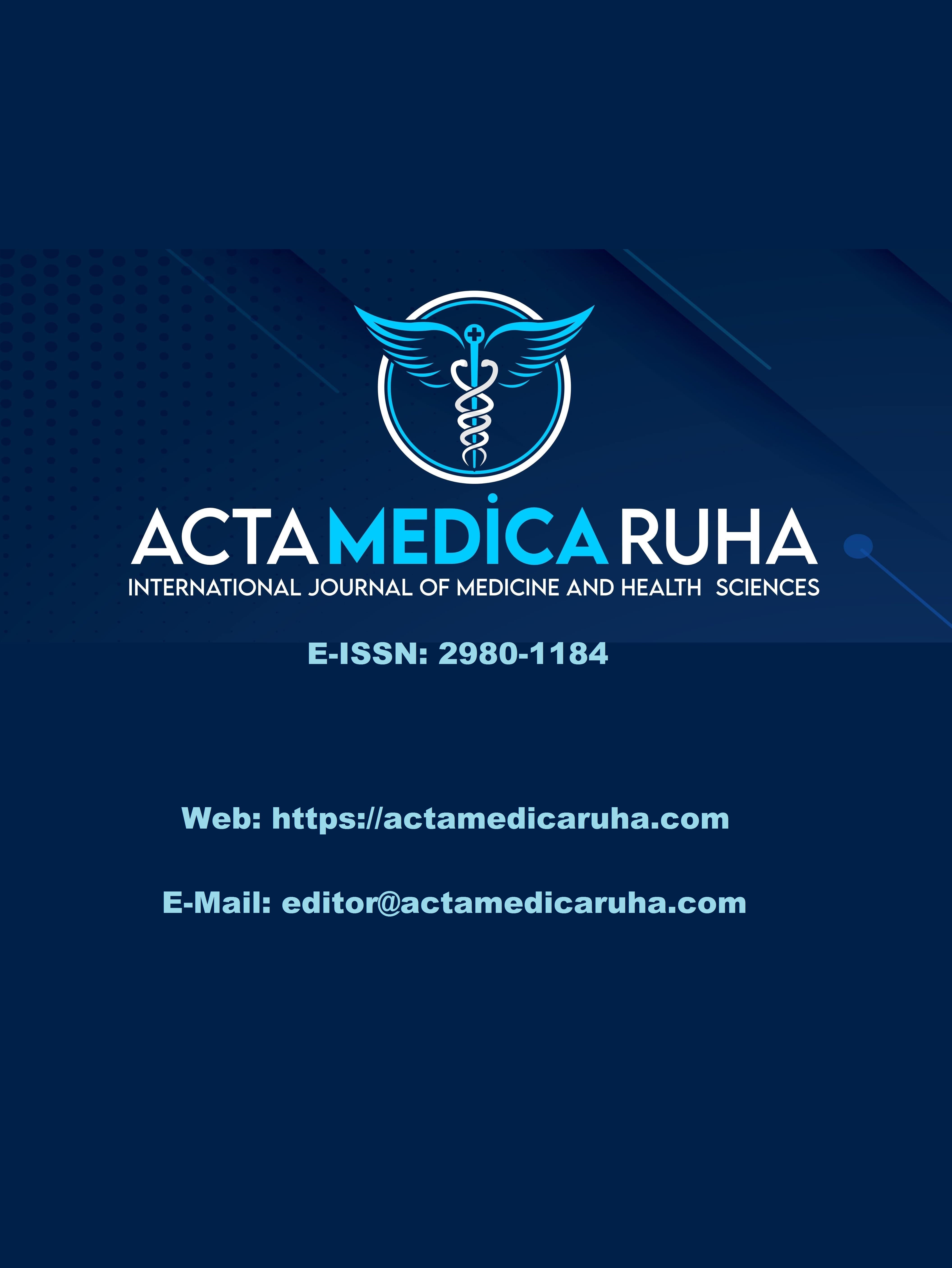Sağlıkta Yapay Zeka Uygulamasının 24 Büyük Zorluğu
Derleme Makale
DOI:
https://doi.org/10.5281/zenodo.8340188Anahtar Kelimeler:
Yapay Zeka, Radyoloji, Öğrenme Eğrisi, Derin Öğrenme, Sağlık MerkezleriÖzet
Giriş: Yapay Zeka'nın (YZ) tıbbi disiplinlere entegrasyonu önemli bir potansiyel göstermiştir. Ancak, AI'ın potansiyeli ve vaatleri hakkında coşkulu bir literatür bolluğu olmasına rağmen, özellikle tıbbi teşhislerde, pratik tıbbi ortamlarda yaygın olarak benimsenmesiyle ilişkilendirilen birçok zorluk hakkında tartışma eksikliği vardır.
Amaç: Bu çalışma, tıbbi uygulamada yapay zeka teknolojilerini benimseme ile ilişkilendirilen zorlukları ayrıntılı olarak analiz etmeyi amaçlamaktadır. Bu teknolojinin ilerlemesi hakkında gerçekçi bir perspektif sunar, kontrol altındaki laboratuvar koşullarında prototiplerin ve teknolojik göstericilerin ilerlemesini öne çıkaran aşırı idealize edilmiş görüşlere karşı koyar.
Yöntem: Bu çalışmanın araştırma tasarımı, belge analizi/inceleme yöntemine dayanmaktadır. Bu bağlamda, Google Scholar, PubMed, BioMed Central, Cochrane ve çeşitli bilimsel veritabanları gibi platformlar aracılığıyla birçok bilimsel çalışma keşfedildi. Makalelere erişim sağlandı, ardından dikkatli veri analizi ve değerlendirmeleri yapıldı. İncelenen her zorluk için arama kriterleri ayarlandı.
Bulgular: Toplamda 24 önemli zorluk tespit edildi, bunlar iç içe geçmiş ve tıbbi alandaki AI tabanlı gelişmelerin olgunluk seviyesini örneklendiren örneklerle ayrıntılı olarak incelendi. Bu zorluklar doğalarına göre üç ana kategoriye ayrılmıştır. Her bölüm, bağımsız olarak anlaşılabilir bir şekilde yazılmıştır. Gelecek, tıp ve yapay zeka arasındaki sinerjiden kaynaklanan dikkat çekici ilerlemeleri vurgulayan sayısız makale ile büyük vaatlerde bulunmaktadır. Bu nedenle, faydaları, mevcut sınırlamaları ve bunların üstesinden gelmek için yeni yolları ayırt edebilmek için eleştirel düşünmeyi geliştirmek gerekmektedir.
Sonuç: Zorlukların hiçbiri diğerlerinden daha önemli değildir. Tıpta yapay zekanın evrimi, hem hastalar hem de tıbbi uzmanlar için faydaları en üst düzeye çıkarmak için stratejiler kullanarak bu zorlukların kolektif olarak üstesinden gelinmesini gerektirir.
Referanslar
Topol EJ. High-performance medicine: the convergence of human and artificial intelligence. Nature medicine. 2019;25: 44–56.
Jiang F, Jiang Y, Zhi H, Dong Y, Li H, Ma S, et al. Artificial intelligence in healthcare: past, present and future. Stroke Vasc Neurol. 2017;2: 230–243. doi:10.1136/svn-2017-000101
Sayar B. Tıp Alanında Yapay Zekânın Kullanımı: Araştırma Makalesi. Acta Medica Ruha. 2023;1: 27–33. doi:10.5281/zenodo.7749209
Litjens G, Kooi T, Bejnordi BE, Setio AAA, Ciompi F, Ghafoorian M, et al. A survey on deep learning in medical image analysis. Medical Image Analysis. 2017;42: 60–88. doi:10.1016/j.media.2017.07.005
Liew C. The future of radiology augmented with Artificial Intelligence: A strategy for success. European Journal of Radiology. 2018;102: 152–156. doi:10.1016/j.ejrad.2018.03.019
Rajkomar A, Dean J, Kohane I. Machine Learning in Medicine. N Engl J Med. 2019;380: 1347–1358. doi:10.1056/NEJMra1814259
Obermeyer Z, Emanuel EJ. Predicting the Future — Big Data, Machine Learning, and Clinical Medicine. N Engl J Med. 2016;375: 1216–1219. doi:10.1056/NEJMp1606181
Lakhani P, Sundaram B. Deep Learning at Chest Radiography: Automated Classification of Pulmonary Tuberculosis by Using Convolutional Neural Networks. Radiology. 2017;284: 574–582. doi:10.1148/radiol.2017162326
Rajpurkar P, Irvin J, Ball RL, Zhu K, Yang B, Mehta H, et al. Deep learning for chest radiograph diagnosis: A retrospective comparison of the CheXNeXt algorithm to practicing radiologists. PLOS Medicine. 2018;15: e1002686. doi:10.1371/journal.pmed.1002686
Belle A, Thiagarajan R, Soroushmehr SMR, Navidi F, Beard DA, Najarian K. Big Data Analytics in Healthcare. BioMed Research International. 2015;2015: e370194. doi:10.1155/2015/370194
Baytas IM, Xiao C, Zhang X, Wang F, Jain AK, Zhou J. Patient Subtyping via Time-Aware LSTM Networks. Proceedings of the 23rd ACM SIGKDD International Conference on Knowledge Discovery and Data Mining. New York, NY, USA: Association for Computing Machinery; 2017. pp. 65–74. doi:10.1145/3097983.3097997
Esteva A, Kuprel B, Novoa RA, Ko J, Swetter SM, Blau HM, et al. Dermatologist-level classification of skin cancer with deep neural networks. nature. 2017;542: 115–118.
Johnson AEW, Pollard TJ, Shen L, Lehman LH, Feng M, Ghassemi M, et al. MIMIC-III, a freely accessible critical care database. Sci Data. 2016;3: 160035. doi:10.1038/sdata.2016.35
Ouyang D, He B, Ghorbani A, Yuan N, Ebinger J, Langlotz CP, et al. Video-based AI for beat-to-beat assessment of cardiac function. Nature. 2020;580: 252–256.
Ghorbani A, Ouyang D, Abid A, He B, Chen JH, Harrington RA, et al. Deep learning interpretation of echocardiograms. NPJ digital medicine. 2020;3: 1–10.
He B, Kwan AC, Cho JH, Yuan N, Pollick C, Shiota T, et al. Blinded, randomized trial of sonographer versus AI cardiac function assessment. Nature. 2023;616: 520–524. doi:10.1038/s41586-023-05947-3
Esteva A, Robicquet A, Ramsundar B, Kuleshov V, DePristo M, Chou K, et al. A guide to deep learning in healthcare. Nat Med. 2019;25: 24–29. doi:10.1038/s41591-018-0316-z
Wang RY, Strong DM. Beyond Accuracy: What Data Quality Means to Data Consumers. Journal of Management Information Systems. 1996;12: 5–33. doi:10.1080/07421222.1996.11518099
Jensen PB, Jensen LJ, Brunak S. Mining electronic health records: towards better research applications and clinical care. Nat Rev Genet. 2012;13: 395–405. doi:10.1038/nrg3208
Zook M, Barocas S, Boyd D, Crawford K, Keller E, Gangadharan SP, et al. Ten simple rules for responsible big data research. PLOS Computational Biology. 2017;13: e1005399. doi:10.1371/journal.pcbi.1005399
Schriger DL. Annals of Emergency Medicine. Annals of Emergency Medicine. 2008;52: 480. doi:10.1016/j.annemergmed.2008.06.461
Liu X, Faes L, Kale AU, Wagner SK, Fu DJ, Bruynseels A, et al. A comparison of deep learning performance against health-care professionals in detecting diseases from medical imaging: a systematic review and meta-analysis. The Lancet Digital Health. 2019;1: e271–e297. doi:10.1016/S2589-7500(19)30123-2
Ohno-Machado L. Realizing the full potential of electronic health records: the role of natural language processing. Journal of the American Medical Informatics Association. 2011;18: 539. doi:10.1136/amiajnl-2011-000501
Safran C, Bloomrosen M, Hammond WE, Labkoff S, Markel-Fox S, Tang PC, et al. Toward a National Framework for the Secondary Use of Health Data: An American Medical Informatics Association White Paper. Journal of the American Medical Informatics Association. 2007;14: 1–9. doi:10.1197/jamia.M2273
Weinstein JN, Collisson EA, Mills GB, Shaw KRM, Ozenberger BA, Ellrott K, et al. The Cancer Genome Atlas Pan-Cancer analysis project. Nat Genet. 2013;45: 1113–1120. doi:10.1038/ng.2764
Mahmood SS, Levy D, Vasan RS, Wang TJ. The Framingham Heart Study and the epidemiology of cardiovascular disease: a historical perspective. The Lancet. 2014;383: 999–1008. doi:10.1016/S0140-6736(13)61752-3
Bishop CM, Nasrabadi NM. Pattern recognition and machine learning. Springer; 2006.
Goodfellow I, Bengio Y, Courville A. Deep learning. MIT press; 2016.
LeCun Y, Bengio Y, Hinton G. Deep learning. nature. 2015;521: 436–444.
Rudin C. Stop explaining black box machine learning models for high stakes decisions and use interpretable models instead. Nature machine intelligence. 2019;1: 206–215.
Ching T, Himmelstein DS, Beaulieu-Jones BK, Kalinin AA, Do BT, Way GP, et al. Opportunities and obstacles for deep learning in biology and medicine. Journal of The Royal Society Interface. 2018;15: 20170387.
Holzinger A, Biemann C, Pattichis CS, Kell DB. What do we need to build explainable AI systems for the medical domain? 2017 [cited 6 Aug 2023]. doi:10.48550/ARXIV.1712.09923
Coiera E. Guide to Health Informatics. CRC Press; 2015.
Char DS, Shah NH, Magnus D. Implementing Machine Learning in Health Care — Addressing Ethical Challenges. N Engl J Med. 2018;378: 981–983. doi:10.1056/NEJMp1714229
Wachter S, Mittelstadt B, Floridi L. Transparent, explainable, and accountable AI for robotics. Science Robotics. 2017;2: eaan6080. doi:10.1126/scirobotics.aan6080
Guidotti R, Monreale A, Ruggieri S, Turini F, Giannotti F, Pedreschi D. A Survey of Methods for Explaining Black Box Models. ACM Comput Surv. 2019;51: 1–42. doi:10.1145/3236009
Doshi-Velez F, Kim B. Towards A Rigorous Science of Interpretable Machine Learning. arXiv; 2017. Available: http://arxiv.org/abs/1702.08608
Hersh WR, Weiner MG, Embi PJ, Logan JR, Payne PRO, Bernstam EV, et al. Caveats for the Use of Operational Electronic Health Record Data in Comparative Effectiveness Research. Med Care. 2013;51: S30–S37. doi:10.1097/MLR.0b013e31829b1dbd
Rajkomar A, Oren E, Chen K, Dai AM, Hajaj N, Hardt M, et al. Scalable and accurate deep learning with electronic health records. npj Digital Med. 2018;1: 1–10. doi:10.1038/s41746-018-0029-1
Murdoch TB, Detsky AS. The Inevitable Application of Big Data to Health Care. JAMA. 2013;309: 1351–1352. doi:10.1001/jama.2013.393
Beam AL, Kohane IS. Big Data and Machine Learning in Health Care. JAMA. 2018;319: 1317–1318. doi:10.1001/jama.2017.18391
Loscalzo J, Kohane I, Barabasi A-L. Human disease classification in the postgenomic era: A complex systems approach to human pathobiology. Molecular Systems Biology. 2007;3: 124. doi:10.1038/msb4100163
Barnett K, Mercer SW, Norbury M, Watt G, Wyke S, Guthrie B. Epidemiology of multimorbidity and implications for health care, research, and medical education: a cross-sectional study. The Lancet. 2012;380: 37–43. doi:10.1016/S0140-6736(12)60240-2
Tinetti ME, Fried TR, Boyd CM. Designing Health Care for the Most Common Chronic Condition—Multimorbidity. JAMA. 2012;307: 2493–2494. doi:10.1001/jama.2012.5265
Liu J, Ma J, Wang J, Zeng DD, Song H, Wang L, et al. Comorbidity Analysis According to Sex and Age in Hypertension Patients in China. International Journal of Medical Sciences. 2016;13: 99–107. doi:10.7150/ijms.13456
McGovern A, Hinton W, Correa A, Munro N, Whyte M, Lusignan S de. Real-world evidence studies into treatment adherence, thresholds for intervention and disparities in treatment in people with type 2 diabetes in the UK. BMJ Open. 2016;6: e012801. doi:10.1136/bmjopen-2016-012801
Raghupathi W, Raghupathi V. Big data analytics in healthcare: promise and potential. Health Inf Sci Syst. 2014;2: 3. doi:10.1186/2047-2501-2-3
Weiskopf NG, Weng C. Methods and dimensions of electronic health record data quality assessment: enabling reuse for clinical research. Journal of the American Medical Informatics Association. 2013;20: 144–151. doi:10.1136/amiajnl-2011-000681
Choi E, Bahadori MT, Schuetz A, Stewart WF, Sun J. Doctor AI: Predicting Clinical Events via Recurrent Neural Networks. Proceedings of the 1st Machine Learning for Healthcare Conference. PMLR; 2016. pp. 301–318. Available: https://proceedings.mlr.press/v56/Choi16.html
Schieppati A, Henter J-I, Daina E, Aperia A. Why rare diseases are an important medical and social issue. The Lancet. 2008;371: 2039–2041. doi:10.1016/S0140-6736(08)60872-7
Domingos P. A few useful things to know about machine learning. Commun ACM. 2012;55: 78–87. doi:10.1145/2347736.2347755
Shortliffe EH, Sepúlveda MJ. Clinical Decision Support in the Era of Artificial Intelligence. JAMA. 2018;320: 2199–2200. doi:10.1001/jama.2018.17163
Tajbakhsh N, Shin JY, Gurudu SR, Hurst RT, Kendall CB, Gotway MB, et al. Convolutional Neural Networks for Medical Image Analysis: Full Training or Fine Tuning? IEEE Transactions on Medical Imaging. 2016;35: 1299–1312. doi:10.1109/TMI.2016.2535302
Cheplygina V, de Bruijne M, Pluim JPW. Not-so-supervised: A survey of semi-supervised, multi-instance, and transfer learning in medical image analysis. Medical Image Analysis. 2019;54: 280–296. doi:10.1016/j.media.2019.03.009
Chawla NV, Bowyer KW, Hall LO, Kegelmeyer WP. SMOTE: Synthetic Minority Over-sampling Technique. Journal of Artificial Intelligence Research. 2002;16: 321–357. doi:10.1613/jair.953
Goodfellow I, Pouget-Abadie J, Mirza M, Xu B, Warde-Farley D, Ozair S, et al. Generative adversarial networks. Commun ACM. 2020;63: 139–144. doi:10.1145/3422622
Turnbull C, Scott RH, Thomas E, Jones L, Murugaesu N, Pretty FB, et al. The 100 000 Genomes Project: bringing whole genome sequencing to the NHS. BMJ. 2018;361: k1687. doi:10.1136/bmj.k1687
Amodei D, Olah C, Steinhardt J, Christiano P, Schulman J, Mané D. Concrete Problems in AI Safety. 2016 [cited 6 Aug 2023]. doi:10.48550/ARXIV.1606.06565
Kirkpatrick J, Pascanu R, Rabinowitz N, Veness J, Desjardins G, Rusu AA, et al. Overcoming catastrophic forgetting in neural networks. Proceedings of the National Academy of Sciences. 2017;114: 3521–3526. doi:10.1073/pnas.1611835114
Sculley D, Holt G, Golovin D, Davydov E, Phillips T, Ebner D, et al. Hidden Technical Debt in Machine Learning Systems. Advances in Neural Information Processing Systems. Curran Associates, Inc.; 2015. Available: https://papers.nips.cc/paper_files/paper/2015/hash/86df7dcfd896fcaf2674f757a2463eba-Abstract.html
Miller K, Mosby D, Capan M, Kowalski R, Ratwani R, Noaiseh Y, et al. Interface, information, interaction: a narrative review of design and functional requirements for clinical decision support. Journal of the American Medical Informatics Association. 2018;25: 585–592. doi:10.1093/jamia/ocx118
Zhang J, Walji MF. TURF: Toward a unified framework of EHR usability. Journal of Biomedical Informatics. 2011;44: 1056–1067. doi:10.1016/j.jbi.2011.08.005
Patel VL, Kaufman DR. Cognitive Science and Biomedical Informatics. In: Shortliffe EH, Cimino JJ, editors. Biomedical Informatics: Computer Applications in Health Care and Biomedicine. London: Springer; 2014. pp. 109–148. doi:10.1007/978-1-4471-4474-8_4
Horsky J, McColgan K, Pang JE, Melnikas AJ, Linder JA, Schnipper JL, et al. Complementary methods of system usability evaluation: Surveys and observations during software design and development cycles. Journal of Biomedical Informatics. 2010;43: 782–790. doi:10.1016/j.jbi.2010.05.010
Strickland E. IBM Watson, heal thyself: How IBM overpromised and underdelivered on AI health care. IEEE Spectrum. 2019;56: 24–31. doi:10.1109/MSPEC.2019.8678513
Cresswell K, Sheikh A. Organizational issues in the implementation and adoption of health information technology innovations: An interpretative review. International Journal of Medical Informatics. 2013;82: e73–e86. doi:10.1016/j.ijmedinf.2012.10.007
Tenajas R, Miraut D, Illana CI, Alonso-Gonzalez R, Arias-Valcayo F, Herraiz JL. Recent Advances in Artificial Intelligence-Assisted Ultrasound Scanning. Applied Sciences. 2023;13: 3693. doi:10.3390/app13063693
Blease C, Kaptchuk TJ, Bernstein MH, Mandl KD, Halamka JD, DesRoches CM. Artificial Intelligence and the Future of Primary Care: Exploratory Qualitative Study of UK General Practitioners’ Views. Journal of Medical Internet Research. 2019;21: e12802. doi:10.2196/12802
Tenajas R, Miraut D. Echoes in space: Online training and AI’s potential in advancing ultrasound competency. WFUMB Ultrasound Open. 2023;1: 100015. doi:10.1016/j.wfumbo.2023.100015
Johnson KB, Wei W, Weeraratne D, Frisse ME, Misulis K, Rhee K, et al. Precision Medicine, AI, and the Future of Personalized Health Care. Clin Transl Sci. 2021;14: 86–93. doi:10.1111/cts.12884
Miotto R, Wang F, Wang S, Jiang X, Dudley JT. Deep learning for healthcare: review, opportunities and challenges. Briefings in Bioinformatics. 2018;19: 1236–1246. doi:10.1093/bib/bbx044
Shortliffe EH, Cimino JJ, editors. Biomedical Informatics: Computer Applications in Health Care and Biomedicine. London: Springer; 2014. doi:10.1007/978-1-4471-4474-8
Hripcsak G, Albers DJ. Next-generation phenotyping of electronic health records. Journal of the American Medical Informatics Association. 2013;20: 117–121. doi:10.1136/amiajnl-2012-001145
Herrett E, Shah AD, Boggon R, Denaxas S, Smeeth L, Staa T van, et al. Completeness and diagnostic validity of recording acute myocardial infarction events in primary care, hospital care, disease registry, and national mortality records: cohort study. BMJ. 2013;346: f2350. doi:10.1136/bmj.f2350
Gostin LO, Halabi SF, Wilson K. Health Data and Privacy in the Digital Era. JAMA. 2018;320: 233–234. doi:10.1001/jama.2018.8374
Challen R, Denny J, Pitt M, Gompels L, Edwards T, Tsaneva-Atanasova K. Artificial intelligence, bias and clinical safety. BMJ Qual Saf. 2019;28: 231–237. doi:10.1136/bmjqs-2018-008370
Gianfrancesco MA, Tamang S, Yazdany J, Schmajuk G. Potential Biases in Machine Learning Algorithms Using Electronic Health Record Data. JAMA Intern Med. 2018;178: 1544–1547. doi:10.1001/jamainternmed.2018.3763
Naylor CD. On the Prospects for a (Deep) Learning Health Care System. JAMA. 2018;320: 1099–1100. doi:10.1001/jama.2018.11103
London AJ. Artificial Intelligence and Black-Box Medical Decisions: Accuracy versus Explainability. Hastings Center Report. 2019;49: 15–21. doi:10.1002/hast.973
Erickson BJ, Korfiatis P, Akkus Z, Kline TL. Machine Learning for Medical Imaging. Radiographics. 2017;37: 505–515. doi:10.1148/rg.2017160130
Price WN II, Gerke S, Cohen IG. Potential Liability for Physicians Using Artificial Intelligence. JAMA. 2019;322: 1765–1766. doi:10.1001/jama.2019.15064
Vayena E, Blasimme A, Cohen IG. Machine learning in medicine: Addressing ethical challenges. PLOS Medicine. 2018;15: e1002689. doi:10.1371/journal.pmed.1002689
Adkins DE. Machine Learning and Electronic Health Records: A Paradigm Shift. AJP. 2017;174: 93–94. doi:10.1176/appi.ajp.2016.16101169
Neprash HT, McGlave CC, Cross DA, Virnig BA, Puskarich MA, Huling JD, et al. Trends in Ransomware Attacks on US Hospitals, Clinics, and Other Health Care Delivery Organizations, 2016-2021. JAMA Health Forum. 2022;3: e224873. doi:10.1001/jamahealthforum.2022.4873
Yeo LH, Banfield J. Human Factors in Electronic Health Records Cybersecurity Breach: An Exploratory Analysis. Perspect Health Inf Manag. 2022;19: 1i.
Cartwright AJ. The elephant in the room: cybersecurity in healthcare. J Clin Monit Comput. 2023 [cited 13 Aug 2023]. doi:10.1007/s10877-023-01013-5
Mayor S. Sixty seconds on… the WannaCry cyberattack. BMJ. 2018;361: k1750. doi:10.1136/bmj.k1750
Martin G, Ghafur S, Kinross J, Hankin C, Darzi A. WannaCry—a year on. BMJ. 2018;361: k2381. doi:10.1136/bmj.k2381
Biggio B, Roli F. Wild Patterns: Ten Years After the Rise of Adversarial Machine Learning. Proceedings of the 2018 ACM SIGSAC Conference on Computer and Communications Security. New York, NY, USA: Association for Computing Machinery; 2018. pp. 2154–2156. doi:10.1145/3243734.3264418
Finlayson SG, Bowers JD, Ito J, Zittrain JL, Beam AL, Kohane IS. Adversarial attacks on medical machine learning. Science. 2019;363: 1287–1289. doi:10.1126/science.aaw4399
Keesara S, Jonas A, Schulman K. Covid-19 and Health Care’s Digital Revolution. New England Journal of Medicine. 2020;382: e82. doi:10.1056/NEJMp2005835
Lång K, Josefsson V, Larsson A-M, Larsson S, Högberg C, Sartor H, et al. Artificial intelligence-supported screen reading versus standard double reading in the Mammography Screening with Artificial Intelligence trial (MASAI): a clinical safety analysis of a randomised, controlled, non-inferiority, single-blinded, screening accuracy study. The Lancet Oncology. 2023;24: 936–944. doi:10.1016/S1470-2045(23)00298-X
Zuparov IB, Ibragimova MN, Norbutayeva MK, Otaxonov PE, Normamatov SF, Safarov UQ, et al. Modern directions and perspectives of using medical information systems. Modern directions and perspectives of using medical information systems. 2023;2: 1218–1233.
Stead WW. Clinical Implications and Challenges of Artificial Intelligence and Deep Learning. JAMA. 2018;320: 1107–1108. doi:10.1001/jama.2018.11029
Verghese A, Shah NH, Harrington RA. What This Computer Needs Is a Physician: Humanism and Artificial Intelligence. JAMA. 2018;319: 19–20. doi:10.1001/jama.2017.19198
Laine C, Davidoff F. Patient-Centered Medicine: A Professional Evolution. JAMA. 1996;275: 152–156. doi:10.1001/jama.1996.03530260066035
Castelvecchi D. Can we open the black box of AI? Nature News. 2016;538: 20. doi:10.1038/538020a
Gerke S, Yeung S, Cohen IG. Ethical and Legal Aspects of Ambient Intelligence in Hospitals. JAMA. 2020;323: 601–602. doi:10.1001/jama.2019.21699
Goodman B, Flaxman S. European Union Regulations on Algorithmic Decision-Making and a “Right to Explanation.” AI Magazine. 2017;38: 50–57. doi:10.1609/aimag.v38i3.2741
Rakha NA. The Ethics of Data Mining: Lessons from the Cambridge Analytica Scandal. International Journal of Cyber Law. 2023;1. doi:10.59022/clr.24
Carmi L, Zohar M, Riva GM. The European General Data Protection Regulation (GDPR) in mHealth: Theoretical and practical aspects for practitioners’ use. Med Sci Law. 2023;63: 61–68. doi:10.1177/00258024221118411
European Union. European Union. Regulation 2016/679 of the European Parliament and of the Council on the protection of natural persons with regard to the processing of personal data and on the free movement of such data and repealing Directive 95/46/EC (General Data Protection Regulation, “GDPR”). Regulation (EU) 2016/679 of the European Parliament and of the Council. 2016 p. 2016.
Sweeney L. k-anonymity: a model for protecting privacy. Int J Unc Fuzz Knowl Based Syst. 2002;10: 557–570. doi:10.1142/S0218488502001648
Emam KE, Jonker E, Arbuckle L, Malin B. A Systematic Review of Re-Identification Attacks on Health Data. PLOS ONE. 2011;6: e28071. doi:10.1371/journal.pone.0028071
Islam SMR, Kwak D, Kabir MDH, Hossain M, Kwak K-S. The Internet of Things for Health Care: A Comprehensive Survey. IEEE Access. 2015;3: 678–708. doi:10.1109/ACCESS.2015.2437951
Braveman P. health disparities and health equity: Concepts and Measurement. Annual Review of Public Health. 2006;27: 167–194. doi:10.1146/annurev.publhealth.27.021405.102103
Davenport T, Kalakota R. The potential for artificial intelligence in healthcare. Future Healthc J. 2019;6: 94–98. doi:10.7861/futurehosp.6-2-94
Derksen F, Bensing J, Lagro-Janssen A. Effectiveness of empathy in general practice: a systematic review. Br J Gen Pract. 2013;63: e76–e84. doi:10.3399/bjgp13X660814
Topol E. Deep Medicine: How Artificial Intelligence Can Make Healthcare Human Again. Hachette UK; 2019.
Sinclair S, Norris JM, McConnell SJ, Chochinov HM, Hack TF, Hagen NA, et al. Compassion: a scoping review of the healthcare literature. BMC Palliative Care. 2016;15: 6. doi:10.1186/s12904-016-0080-0
Meyer AND, Singh H. The Path to Diagnostic Excellence Includes Feedback to Calibrate How Clinicians Think. JAMA. 2019;321: 737–738. doi:10.1001/jama.2019.0113
Ridd M, Shaw A, Lewis G, Salisbury C. The patient–doctor relationship: a synthesis of the qualitative literature on patients’ perspectives. Br J Gen Pract. 2009;59: e116–e133. doi:10.3399/bjgp09X420248
Sallam M. ChatGPT Utility in Healthcare Education, Research, and Practice: Systematic Review on the Promising Perspectives and Valid Concerns. Healthcare. 2023;11: 887. doi:10.3390/healthcare11060887
Yeo YH, Samaan JS, Ng WH, Ting P-S, Trivedi H, Vipani A, et al. Assessing the performance of ChatGPT in answering questions regarding cirrhosis and hepatocellular carcinoma. medRxiv; 2023. p. 2023.02.06.23285449. doi:10.1101/2023.02.06.23285449
Ayers JW, Poliak A, Dredze M, Leas EC, Zhu Z, Kelley JB, et al. Comparing Physician and Artificial Intelligence Chatbot Responses to Patient Questions Posted to a Public Social Media Forum. JAMA Internal Medicine. 2023;183: 589–596. doi:10.1001/jamainternmed.2023.1838
O’Sullivan S, Nevejans N, Allen C, Blyth A, Leonard S, Pagallo U, et al. Legal, regulatory, and ethical frameworks for development of standards in artificial intelligence (AI) and autonomous robotic surgery. Int J Med Robot. 2019;15: e1968. doi:10.1002/rcs.1968
Grote T, Berens P. On the ethics of algorithmic decision-making in healthcare. J Med Ethics. 2020;46: 205–211. doi:10.1136/medethics-2019-105586
Meskó B, Drobni Z, Bényei É, Gergely B, Győrffy Z. Digital health is a cultural transformation of traditional healthcare. Mhealth. 2017;3: 38. doi:10.21037/mhealth.2017.08.07
Syed ST, Gerber BS, Sharp LK. Traveling Towards Disease: Transportation Barriers to Health Care Access. J Community Health. 2013;38: 976–993. doi:10.1007/s10900-013-9681-1
Guo J, Li B. The Application of Medical Artificial Intelligence Technology in Rural Areas of Developing Countries. Health Equity. 2018;2: 174–181. doi:10.1089/heq.2018.0037
Matheny ME, Whicher D, Thadaney Israni S. Artificial Intelligence in Health Care: A Report From the National Academy of Medicine. JAMA. 2020;323: 509–510. doi:10.1001/jama.2019.21579
Nick Bostrom,, Eliezer Yudkowsky. The Ethics of Artificial Intelligence. Artificial Intelligence Safety and Security. Chapman and Hall/CRC; 2018.
Rezk E, Eltorki M, El-Dakhakhni W. Leveraging Artificial Intelligence to Improve the Diversity of Dermatological Skin Color Pathology: Protocol for an Algorithm Development and Validation Study. JMIR Research Protocols. 2022;11: e34896. doi:10.2196/34896
Komorowski M, Celi LA, Badawi O, Gordon AC, Faisal AA. The Artificial Intelligence Clinician learns optimal treatment strategies for sepsis in intensive care. Nat Med. 2018;24: 1716–1720. doi:10.1038/s41591-018-0213-5
Jha S, Topol EJ. Adapting to Artificial Intelligence: Radiologists and Pathologists as Information Specialists. JAMA. 2016;316: 2353–2354. doi:10.1001/jama.2016.17438
Tenajas R, Miraut D. Rethinking ultrasound probe maintenance in the era of AI. WFUMB Ultrasound Open. 2023;1: 100014. doi:10.1016/j.wfumbo.2023.100014
Bierer BE, Crosas M, Pierce HH. Data Authorship as an Incentive to Data Sharing. N Engl J Med. 2017;376: 1684–1687. doi:10.1056/NEJMsb1616595
Cohen IG, Amarasingham R, Shah A, Xie B, Lo B. The legal and ethical concerns that arise from using complex predictive analytics in health care. Health Aff (Millwood). 2014;33: 1139–1147. doi:10.1377/hlthaff.2014.0048
Gymrek M, McGuire AL, Golan D, Halperin E, Erlich Y. Identifying personal genomes by surname inference. Science. 2013;339: 321–324. doi:10.1126/science.1229566
Sweeney L. Simple Demographics Often Identify People Uniquely. Carnegie Mellon University Pittsburgh.
Adler-Milstein J, Holmgren AJ, Kralovec P, Worzala C, Searcy T, Patel V. Electronic health record adoption in US hospitals: the emergence of a digital “advanced use” divide. J Am Med Inform Assoc. 2017;24: 1142–1148. doi:10.1093/jamia/ocx080
Ramírez DH, Díaz LP, Pérez ÁC, Peña BI, Buenache AB, García JMA, et al. uTile PET: a Privacy Preserving Solution for Collaborative Data-Driven Projects. 2021 [cited 13 Aug 2023]. Available: https://easychair.org/publications/preprint/bcM6
Rieke N, Hancox J, Li W, Milletarì F, Roth HR, Albarqouni S, et al. The future of digital health with Federated Learning. npj Digit Med. 2020;3: 1–7. doi:10.1038/s41746-020-00323-1
Pan SJ, Yang Q. A Survey on Transfer Learning. IEEE Transactions on Knowledge and Data Engineering. 2010;22: 1345–1359. doi:10.1109/TKDE.2009.191
İndir
Yayınlanmış
Nasıl Atıf Yapılır
Sayı
Bölüm
Lisans
Telif Hakkı (c) 2023 Acta Medica Ruha

Bu çalışma Creative Commons Attribution 4.0 International License ile lisanslanmıştır.









